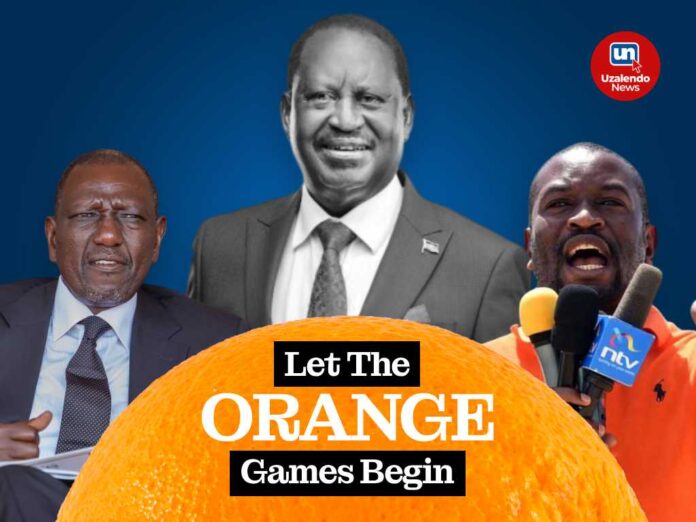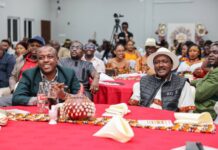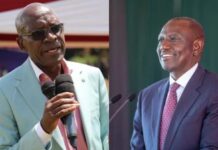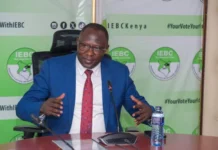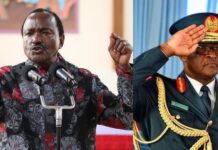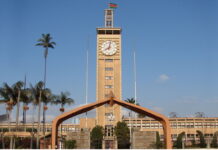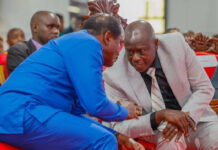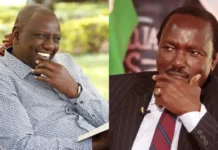The late Raila Odinga’s funeral was more than a national farewell. It was the opening act of a new political struggle. Behind the tears and tributes, the Orange Democratic Movement is entering a season of power games, suspicion, and survival.
The Odinga family set the tone for unity. Ruth Odinga reminded supporters of her father’s final wish that ODM should remain one family. Oburu Odinga, now the acting party leader, declared that Raila’s name will never fade.
Around them, loyalists repeated the message. Millie Odhiambo promised to keep ODM as the largest party in the country.
Chairperson and Homa Bay Governor Gladys Wanga issued a blunt warning to dissenters, telling them to choose loyalty or leave. Narok Senator Ledama Ole Kina spoke of democracy and endurance, while Deputy Party Leader Senator Osotsi said internal wounds would be treated after the mourning period.
Perhaps the most emotional was Treasury CS and former Chairperson John Mbadi. He stood up, eyes red and voice coarse from the loss, to declare that the Orange will never depart State House because that is where Baba would rather it be.
Sifuna’s Cold War
The real storm, however, circles around Secretary-General Edwin Sifuna. Once seen as Raila’s sharpest defender, Sifuna is now being accused of defiance for rejecting the broad-based arrangement that ties ODM to President William Ruto’s government.
His critics claim he is undermining Raila’s last political strategy. His supporters say he is the last man standing between ODM’s ideals and total submission to State House.
At the funeral, Sifuna stood his ground. “Mimi sitachangia kuangusha chama cha ODM,” he said. “I will do everything in my power to keep ODM united even in the face of open provocation. Baba you know this!”
The message was simple. He would not bow to pressure, even from those hiding behind Raila’s memory.
President Ruto played his role like a patient chess master. Speaking as a friend, not an opponent, he called Raila his teacher and promised to protect ODM “as per the wishes of Baba.”
With that single statement, Ruto placed himself inside the heart of Raila’s movement. He appeared as both ally and guardian, turning ODM’s grief into his political opportunity.
The irony could not be clearer. A ruling party that once fought ODM now pledges to defend it, while ODM’s own officials tear each other apart over who truly represents Raila’s vision.
Ruto understands that Raila’s death left more than a leadership vacuum. It left an emotional void. Whoever fills it can command both loyalty and legitimacy.
The months ahead will test whether ODM can remain true to its identity or whether it will be absorbed into Ruto’s grand coalition. If Sifuna is removed, it will signal victory for those who believe survival means surrender. If he survives, ODM may rediscover its old defiance.
Raila built ODM as a movement of resistance and reform. As a matter of fact it rose from the NO movement that gave former President Mwai Kibaki his first vote of no confidence. In 2007 it was forced to share power in the grand coalition, a step Baba took to restore calm in Kenya’s darkest chapter.
Down the drain, the Orange has been on the table, in many coalitions to negotiate a its space in government.
Today it risks becoming an accessory to power. The Orange movement has entered a new chapter, and for the first time, one without its founder, one full of intrigue, and one that will define Kenya’s next political era.
Let the Orange games begin.









